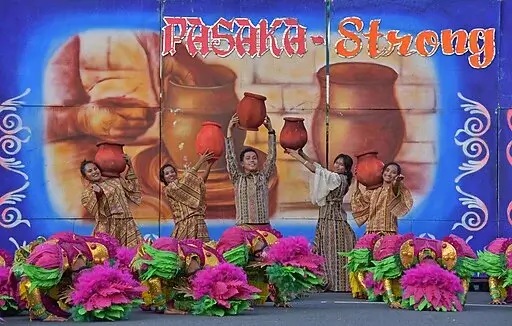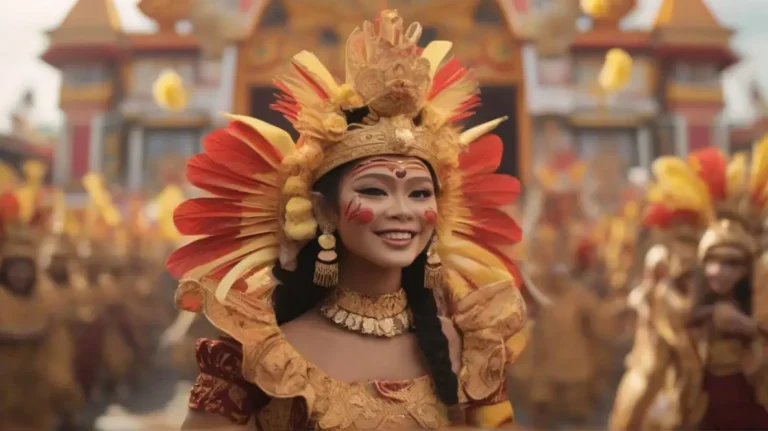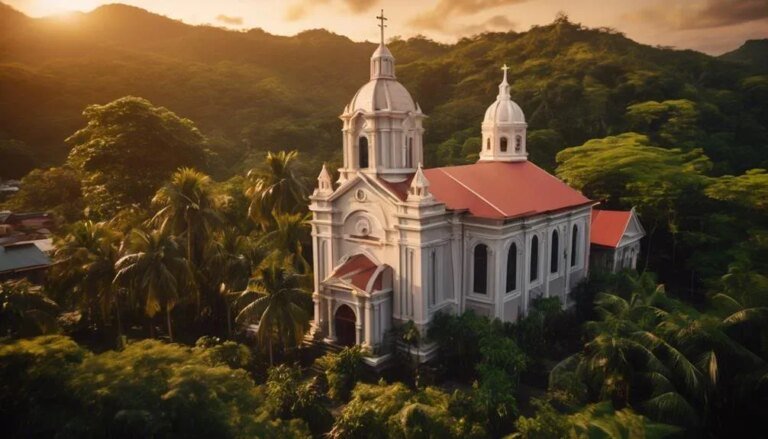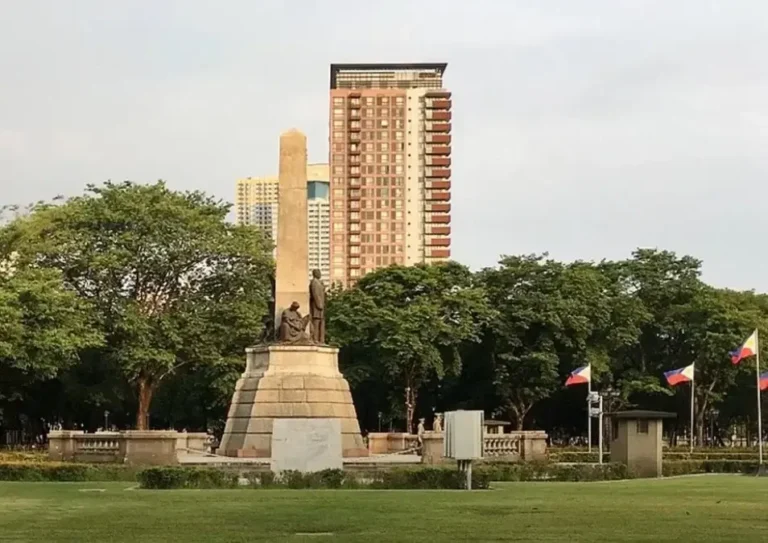Flores de Mayo: A Month-Long Flower Festival in the Philippines
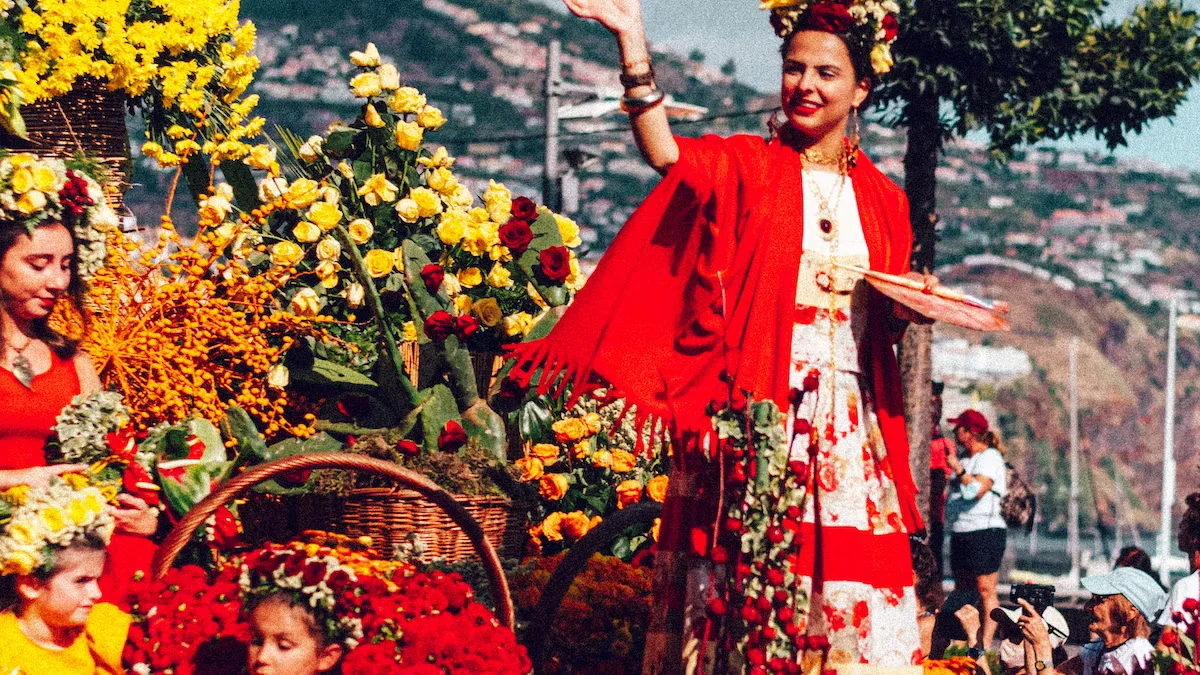
Image Source: unsplash
Flores de Mayo, also known as Santacruzan, is a vibrant month-long Flower Festival in the Philippines that showcases the rich history and key features of Philippine culture.
It combines Catholic traditions with local customs, fostering unity and camaraderie among participants. Flores de Mayo attracts tourists worldwide, boosting local tourism and contributing to economic growth.
The festival continues to evolve while preserving its traditions, incorporating modern elements to gain international recognition.
Facts About The Flores de Mayo Festival Philippines
| Facts | Explanation |
|---|---|
| Festival Name | Flores de Mayo Festival |
| Type of Festival | Religious and Cultural |
| Festival Etymology | “Flores de Mayo” means “Flowers of May” in Spanish |
| Brief Festival History | – Celebrated in the Philippines during the entire month of May – Traditionally includes the Santacruzan procession, where young ladies parade in beautiful gowns representing different biblical characters and virtues |
| City History | – The festival is celebrated in various cities and towns across the Philippines – Often associated with the Spanish colonial period and the introduction of Catholicism in the country |
| City Location | Philippines |
| How to Reach | – By air: The nearest major airport is in Manila, from where visitors can take domestic flights to reach the specific city or town of the festival – By land: Bus services are available from various parts of the country to reach the festival location |
| Nearby Cities/Towns | Manila: Approximately 10-20 kilometers away from various festival locations |
| Ethnic Information | – The festival showcases the influence of Spanish and Catholic traditions on Filipino culture – It also reflects the blending of indigenous practices with colonial customs |
| Main Events/Activities | – Santacruzan procession – Floral offerings and processions – Traditional dances and music performances |
| Tourist Attractions | – Intramuros: Historic walled area in Manila – Rizal Park: Iconic urban park in Manila – Taal Volcano: Natural attraction near some festival locations |
| Famous Food Dishes | – Adobo: Marinated meat dish – Halo-halo: Shaved ice dessert – Lechon: Roast pig |
| Landmarks | – Basilica Minore de San Sebastian: Manila – Fort Santiago: Historic citadel in Manila – Taal Basilica: Batangas |
| Related Festivals | – Ati-Atihan Festival: Aklan, Philippines – Sinulog Festival: Cebu, Philippines – Pahiyas Festival: Lucban, Philippines |
Why “Flores De Mayo” is Celebrated
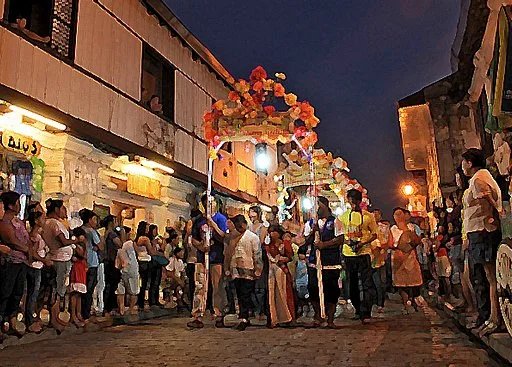
The celebration of “Flores De Mayo” holds historical significance in the Philippines as a Catholic festival dedicated to expressing gratitude to the Blessed Virgin Mary.
With roots dating back to the influence of the Spaniards, this month-long event showcases the strong devotion and religious values of the Filipino community.
The festival involves various activities such as daily rosary recitation, flower offerings, and a procession called Santacruzan, which aims to transmit religious devotion to the youth.
By preserving the culture and faith of Filipinos, “Flores De Mayo” serves as a meaningful tradition that unifies and strengthens the faith of the community.
Tracing the Roots of Flores de Mayo
Flores de Mayo has its origins in Spain and was brought to the Philippines during the Spanish colonial period. This month-long Flower Festival combines Catholic traditions with local customs, creating a unique and distinct Philippine celebration.
Origins in Spain and Arrival in the Philippines
The roots of Flores de Mayo can be traced back to Spain, where it originated as a religious festival honoring the Virgin Mary. The tradition was introduced to the Philippines by Spanish colonizers, who sought to spread Catholicism among the Filipino population.
During the Spanish colonial period, Flores de Mayo became deeply ingrained in Philippine culture. It served as a way for Filipinos to express their devotion to the Virgin Mary and showcase their faith through vibrant floral offerings and processions.
Incorporation of Local Customs and Traditions
As Flores de Mayo made its way to the Philippines, it began incorporating local customs and traditions. This fusion of Catholicism with indigenous practices gave rise to a unique celebration that reflects the country’s diverse cultural heritage.
In addition to religious rituals, Flores de Mayo showcases various elements of Filipino culture. Traditional dances, music, and costumes are an integral part of the festivities, adding an extra layer of vibrancy and excitement.
One significant aspect of Flores de Mayo is the Santacruzan procession. This grand parade features young women dressed in elegant gowns representing biblical characters and historical figures. The highlight of this procession is Queen Helena, who symbolizes the search for the Holy Cross.
Flores de Mayo Philippines is not just a religious event; it is an expression of Filipino identity and pride. It serves as a reminder of both historical ties with Spain and indigenous customs that have shaped Philippine culture over centuries.
Honoring the Virgin Mary: Santacruzan and Flores de Mayo
Flores de Mayo is a celebration that holds deep religious significance, particularly in its association with the Santacruzan procession. This section explores the importance of Santacruzan within Flores de Mayo and delves into the religious rituals and devotion displayed during this month-long Flower Festival.
Significance of Santacruzan in Flores de Mayo
Santacruzan is a highlight of Flores de Mayo, symbolizing the search for the Holy Cross by Queen Helena, the mother of Emperor Constantine. This grand procession showcases various biblical characters and historical figures, each representing an important aspect of faith.
Queen Helena plays a central role in Santacruzan as she leads the procession, embodying strength and determination in her quest for the Holy Cross. Her presence signifies the devotion to finding spiritual enlightenment and serves as a reminder of the Christian roots embedded in Philippine culture.
The representation of biblical characters during Santacruzan adds depth to the festival. Each character carries their own symbolism, reflecting different virtues and lessons from religious teachings. From Mary Magdalene to Moses, these representations create a visual narrative that connects participants and spectators alike to their faith.
Religious Rituals and Devotion to the Virgin Mary
Flores de Mayo is characterized by vibrant processions, floral offerings, and religious rituals dedicated to honoring the Virgin Mary. Participants adorn themselves with traditional attire while carrying flowers as an offering to express their devotion.
The floral offerings are not merely decorative; they hold profound meaning. Flowers are seen as symbols of purity, beauty, and grace—attributes associated with the Virgin Mary herself. The act of offering flowers is a way for devotees to show their love and reverence for her.
During Flores de Mayo Philippines, devotees engage in prayers, novenas, and other religious activities that deepen their connection with their faith. The month-long celebration becomes a time of reflection, spiritual renewal, and communal worship.
The devotion displayed during Flores de Mayo is a testament to the strong religious beliefs and traditions that have been passed down through generations. It is a time when Filipinos come together to honor the Virgin Mary, strengthen their faith, and celebrate their shared heritage.
A Tapestry of Colors and Devotion: Flores de Mayo’s Key Features
Flores de Mayo is a celebration that showcases a vibrant tapestry of colors and devotion. This section explores two key features of the festival: the colorful parades and floral decorations, as well as the representation of biblical characters and historical figures.
Colorful Parades and Floral Decorations
One of the most captivating aspects of Flores de Mayo is the colorful parades and processions that fill the streets with life and energy. Participants don vibrant costumes, reflecting the rich cultural heritage of the Philippines. The streets come alive with a kaleidoscope of colors, creating a visual spectacle that delights both locals and tourists.
The floral decorations play an integral role in Flores de Mayo, adorning the venues where festivities take place. Elaborate arrangements of flowers transform spaces into enchanting gardens, filling the air with their sweet fragrance. These intricate floral displays are meticulously crafted to create a visually stunning backdrop for the celebrations.
Representation of Biblical Characters and Historical Figures
Flores de Mayo Philippines incorporates representations of biblical characters and historical figures, adding depth to its cultural significance. Each character holds symbolic meaning, representing virtues or lessons from religious teachings.
From Mary Magdalene to Moses, these representations provide a visual narrative that connects participants and spectators alike to their faith. The portrayal of Queen Helena leading the procession symbolizes her quest for spiritual enlightenment—a powerful reminder of devotion and strength.
The inclusion of historical figures adds another layer to Flores de Mayo’s key features. These figures represent important moments in history that have shaped Philippine culture. Through their representation, participants pay homage to their ancestors while celebrating their shared heritage.
The symbolism behind each character creates a deeper appreciation for Flores de Mayo’s traditions. It serves as a reminder of the values upheld by Filipinos—faith, resilience, and unity.
Cultural Heritage and Community Celebrations
Flores de Mayo plays a vital role in preserving Philippine cultural heritage and strengthening community bonds. This section explores how the festival contributes to the preservation of traditions, music, and dances, and fosters a sense of unity and camaraderie among communities.
Preserving Philippine Cultural Heritage
Flores de Mayo is deeply rooted in Philippine culture, making it an essential part of the country’s cultural heritage. The festival serves as a platform for showcasing traditional customs, music, and dances that have been passed down through generations.
Through Flores de Mayo, younger generations have the opportunity to learn about their cultural roots and understand the significance of these traditions. It provides a space for cultural exchange and appreciation, ensuring that these practices are not lost over time.
The festival also acts as a catalyst for cultural preservation efforts. Local communities take pride in organizing Flores de Mayo celebrations, working together to ensure that the traditions associated with the festival are upheld. From costume-making workshops to dance rehearsals, there is a collective effort to pass on these customs to future generations.
Strengthening Community Bonds
Flores de Mayo brings communities together in a spirit of unity and camaraderie. The month-long celebration fosters a sense of belonging as people from different backgrounds come together to honor the Virgin Mary.
During Flores de Mayo Philippines, neighbors collaborate on various aspects of the festival preparation—from creating floral decorations to organizing processions. This collective effort strengthens community bonds as individuals work towards a common goal.
The festivities provide opportunities for social interaction and connection among community members. People gather at local churches or designated venues where they can engage in conversations, share stories, and celebrate their shared heritage. It is during these moments that lifelong friendships are formed and existing relationships are strengthened.
Flores de Mayo serves as a reminder that despite individual differences, Filipinos can come together in celebration of their faith and culture. It promotes inclusivity and encourages a sense of belonging, fostering a strong sense of community spirit.
Attracting Visitors and Boosting Local Tourism
Flores de Mayo has a significant impact on tourism, attracting visitors from around the world and boosting local tourism. This section explores how the festival draws in tourists, the economic benefits it brings, and its role in promoting Philippine culture and festive celebrations.
Tourism Impact of Flores de Mayo
Flores de Mayo Philippines has become a major draw for tourists seeking to experience the vibrant month-long Flower Festival. The colorful parades, intricate floral decorations, and rich cultural heritage showcased during the festival captivate visitors from different parts of the globe.
Tourists are drawn to Flores de Mayo not only for its visual spectacle but also for the opportunity to immerse themselves in Philippine traditions and customs. They witness firsthand the deep devotion displayed by participants, creating a memorable and authentic cultural experience.
The influx of tourists during Flores de Mayo has a positive economic impact on local communities. It stimulates various sectors such as hospitality, transportation, food services, and handicrafts. Local businesses thrive as they cater to the needs of visitors who come to witness this grand celebration.
Promoting Philippine Culture and Festive Celebrations
Flores de Mayo serves as a platform for promoting Philippine culture and showcasing festive celebrations to international tourists. The festival highlights the country’s rich heritage, traditions, music, dances, and craftsmanship.
Efforts are made to increase global recognition of Flores de Mayo through marketing campaigns that target international audiences. Social media platforms play a crucial role in spreading awareness about this unique cultural event. Photos and videos shared online capture the beauty of Flores de Mayo, enticing travelers to visit the Philippines.
By promoting Flores de Mayo globally, there is an opportunity to attract more international tourists who are interested in experiencing diverse cultures and participating in unique festivals. This not only contributes to local tourism but also fosters cross-cultural understanding and appreciation.
Flores de Mayo serves as a gateway for visitors to explore other attractions in the Philippines, such as historical sites, natural wonders, and culinary delights. It offers a holistic experience that combines cultural immersion with the beauty of the country’s landscapes.
Embracing the Future: Evolution and Modernization of Flores de Mayo
Flores de Mayo is not immune to the influence of modernization and evolving trends. This section explores how the festival is incorporating modern elements and increasing international recognition, while still preserving its essence.
Incorporating Modern Elements into Flores de Mayo
To stay relevant in a rapidly changing world, Flores de Mayo has embraced modern elements that enhance the festival experience. Technology plays a significant role in capturing and sharing the beauty of the event with a wider audience.
Social media platforms have become powerful tools for promoting Flores de Mayo globally. Through hashtags, live streaming, and engaging content, organizers can reach a broader audience, attracting more visitors from different parts of the world.
Additionally, contemporary influences are shaping the festival’s aesthetics. While traditional costumes and floral decorations remain integral to Flores de Mayo, there is room for creative interpretations that incorporate modern fashion trends and artistic expressions. This fusion of traditional and contemporary elements adds a fresh perspective to the celebration.
Increasing International Recognition
Efforts are underway to increase international recognition of Flores de Mayo as an iconic cultural event. Recognizing its potential as a tourist attraction, tourism boards and local communities actively promote the festival through various channels.
Participation in international festivals and cultural exchanges allows Flores de Mayo to gain exposure on a global scale. Showcasing Philippine culture through performances, exhibitions, and workshops, it attracts the attention of travelers seeking unique experiences.
Increasing international recognition not only boosts tourism but also fosters cross-cultural understanding. It allows visitors to appreciate the rich heritage of the Philippines while creating opportunities for cultural exchange between locals and tourists.
As Flores de Mayo gains more visibility internationally, there is potential for attracting greater numbers of international tourists who seek to immerse themselves in diverse cultures. This would contribute significantly to local economies while preserving the traditions and values associated with this cherished festival.
Summary Of Flores de Mayo Festival Philippines
| Topic | Details | Link |
|---|---|---|
| Flores de Mayo | – Festival in the Philippines in May – May devotions to the Blessed Virgin Mary – Lasts for the entire month – Culminates with the Santacruzan pageant on the last day of May | Flores de Mayo |
| Santacruzan | – Ritual pageant held on the last day of Flores de Mayo – Honors the finding of the True Cross by Helena of Constantinople and Constantine the Great | Santacruzan |
| Etymology | – Derived from the Spanish word “flores” meaning “flowers” – Also known as “Flores de María” and “Álay” | Etymology |
| Santacruzan | – Religious beauty pageant held in many cities, towns, and communities throughout the Philippines during May – Depicts the finding of the True Cross by Queen Helena | Santacruzan |
| Marian titles | – Various figures representing different titles of the Virgin Mary and biblical/historical figures associated with her | Marian titles |
| Procession | – Includes a procession featuring various participants representing different titles and figures associated with Mary | Procession |
Related References To Flores de Mayo Festival Philippines
| Reference | Link |
|---|---|
| St. Michael the Archangel parish | Link |
| Diocese of Imus | Link |
| Bacoor City, Cavite, Philippines | Link |
| Gregorio Eusebio, Head of the Easter Ladies | Link |
| Santacruzan procession | Link |
| Reicee Molanda, Reyna Elena | Link |
What Are the Similarities Between the Higalaay Festival and the Flores de Mayo Festival in the Philippines?
The Higalaay Festival celebration and the Flores de Mayo Festival in the Philippines share various similarities. Both events are rooted in rich cultural traditions and are widely celebrated in the country. The festivals showcase the Filipinos’ religious devotion and love for community gatherings. During the Higalaay festival celebration, people engage in vibrant street parades, while the Flores de Mayo festival highlights the beauty and elegance of young ladies in colorful gowns. Ultimately, these festivals bring people together to honor their faith and enjoy a joyful atmosphere.
Embracing the Beauty of Flores de Mayo
Flores de Mayo is a captivating month-long Flower Festival that showcases the beauty of Philippine culture, religious devotion, and community celebrations. It immerses visitors in a vibrant tapestry of colors, traditions, and expressions of faith.
The festival’s cultural heritage reflects a fusion of Catholic traditions and local customs in the Philippines. From its origins in Spain to its arrival during the Spanish colonial period, Flores de Mayo has evolved into a distinct Philippine celebration that preserves its rich history while embracing modern influences.
Participants and spectators of Flores de Mayo Philippines enjoy colorful parades with intricate floral decorations. These festivities symbolize virtues and lessons from religious teachings through representations of biblical characters and historical figures.
Beyond its visual splendor, Flores de Mayo strengthens community bonds by fostering unity and camaraderie. Communities collaborate on various aspects of the festival preparation, creating a sense of belonging.
As Flores de Mayo evolves and incorporates modern elements, it attracts visitors from around the world who seek to experience the unique cultural heritage of the Philippines. Efforts to increase international recognition have opened doors for cross-cultural exchange and appreciation.
Embrace the beauty of Flores de Mayo—a celebration that captivates with vibrant displays, preserves traditions, promotes unity, and showcases the rich cultural tapestry of the Philippines.

